On Re-Reading a Banned Book: Nathan Kamenetsky’s Making of a Godol
In 1993, Mesorah Publications published Reb Yaakov: The Life and Times of Hagaon Rabbi Yaakov Kamenetsky, by Yonason Rosenblum, in its ArtScroll History series. By the time of his passing in 1986 at the age of ninety-five, Rabbi Kamenetsky had been regarded as one of the preeminent gedolei hador (great men of the generation) for decades in the American yeshiva world. Although Rosenblum’s biography did not trade in miracles or unbelievable coincidences, it presented a now familiar version of haredi history. It was the life of a tzaddik, or saint, who, the jacket copy said, “had the uncanny ability to marshal the entire breadth of his encyclopedic Torah knowledge” in order to answer “every question and problem” that was brought to him. This hagiographic approach was carried throughout the book, with sections given titles such as “A Living Sefer Torah,” “The Epitome of Simplicity,” “I Never Said a Sheker [falsehood],” and “Leader of the Generation.”
Rosenblum’s book also announced on the very cover that it was “based on the research of Rabbi Noson Kamenetsky,” Reb Yaakov’s son and himself a rosh yeshiva at Yeshivas Itri in Jerusalem. In a somewhat unusual publisher’s preface, Nosson Scherman and Meir Zlotowitz told the reader that “Reb Noson himself is at work on a major historical and biographical work entitled The Life and Times of Reb Yaakov (1891-1986),” which they predicted would be both a complete biography and a “comprehensive treatment of the Lithuanian yeshiva world in which he was formed.” Why Rosenblum’s almost identically titled volume avowedly based on Noson Kamenetzky’s research was necessary if this major study was already on its way, the publishers did not say.
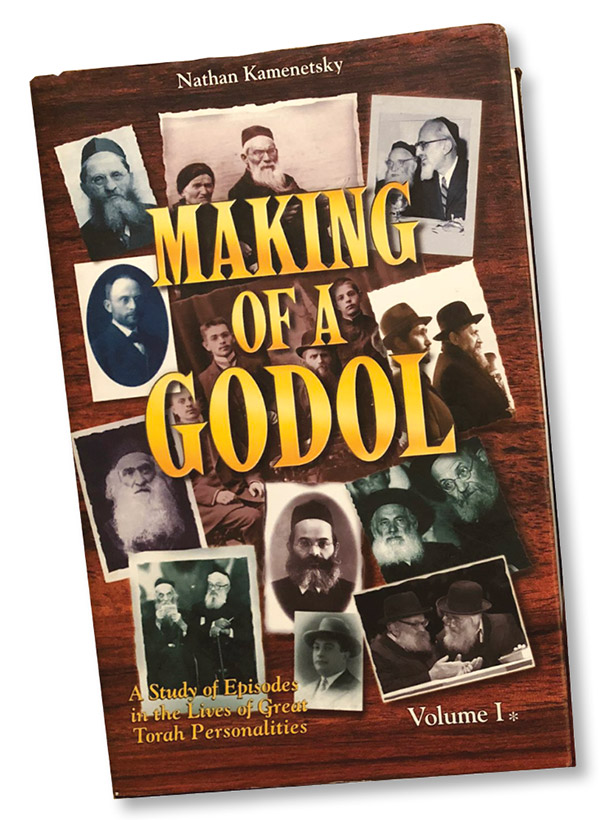
In 2002, Rabbi Nathan Kamenetsky (he chose to write under the English form of his first name) finally self-published his utterly unique and quickly scandalous book Making of a Godol: A Study of Episodes in the Lives of Great Torah Personalities. I vividly remember the day my copy of the two-volume work arrived from a Jewish bookstore in Brooklyn. Even the cover made clear that this was nothing like an ArtScroll hagiography. It featured a homemade-looking collage of pictures of twentieth-century rabbinic figures, including one lifted from the cover of my recent book, a biography of Rabbi Jehiel Jacob Weinberg (some time later, when Kamenetsky and I spoke, he was quick to apologize for this). Two things were interesting about Kamenetsky’s use of this picture. First, it meant that he had consulted an academic book. More significantly, it meant that he regarded Weinberg, a man of wide academic and cultural interests who eventually became rector of the proto-Modern Orthodox Hildesheimer Rabbinical Seminary, as part of the story of the Lithuanian Torah society, which the modern yeshiva world regards as its spiritual predecessor. Moreover, there were other figures who would never be found on the cover of a typical haredi book, such as Israel’s first Ashkenazi chief rabbi Yizhaq Herzog and Rabbi Joseph B. Soloveitchik, rosh yeshiva at Yeshiva University—leading figures in the two institutions that the haredi yeshiva world defines itself against, the State of Israel and YU.
Anyone lucky enough to have bought a copy of Kamenetsky’s book when it came out (for reasons that will become clear below, it now costs $2,503 on Amazon) quickly saw what a curious book it was: chatty, psychologically acute, alternately gullible and critical, endlessly digressive, and compulsively readable (though the spelling and transliteration are a bit idiosyncratic). It also had a peculiar literary structure that could have been conceived only by someone who was raised in an intellectual tradition of commentaries and metacommentaries: the biography of the godol in question was just 67 pages long and ended in spring 1908, when “our protagonist,” as Kamenetsky refers to his father, was seventeen. All the rest was commentary, or rather notes and excurses and further notes spawned by these excurses (each distinguished by somewhat bizarre choices of headings and font). As Kamenetsky himself explained in his introduction:
Breaking this book down by percentages, it is only 7% Text and 93% Notes/Excurses: the textual fraction, the one-fourteenth which biographic [sic] of my father (in more detail than the first part of the Reb Yaakov book [by Rosenblum]) is used as a platform from which to launch forth into the orbits of the gedolim, other eras, other worlds, and specific and unconnected events involving those great men.
And, indeed, Kamenetsky does launch into orbits and recreate other worlds, or at least the world of early-twentieth-century Torah scholars in Lithuania and Eastern Europe more generally. He is also unabashed about the fact that many, perhaps most, of the “specific and unconnected events” upon which his book dwells have little to do with his father’s life, except in the sense that they happened in the world in which he was formed. And no one, certainly no academic historian of whom I am aware, knew as much about this world as Kamenetsky did. Any student of Lithuanian rabbinic history or the history of modern yeshivot—key subjects in the history of modern Judaism—simply must consult this bizarre, beguiling work. Rarely have I learned as much from a book as I did from Making of a Godol, and rare again is a book that can bring great rabbis (or, indeed, intellectuals of any sort) to such vivid life.
Nathan Kamenetsky had an instinctive historical sensibility: he was interested in the minute particulars and realia of his subjects’ lives, and he had a knack for choosing the revealing anecdote. Although, like conventional haredi historians, he traded in anecdotes rather than longer narrative arcs and was ultimately interested in individuals rather than institutions, Kamenetsky did not turn every story into a homily of pious behavior.
Nonetheless, it must be said that Kamenetsky lacked any sense of critical historical method. Just as a rosh yeshiva—which, of course, Kamenetsky was—collates apparently divergent Talmudic texts and then tries to show that they don’t really contradict each other, Kamenetsky assumed that all the information he had collected, whether from written sources of varying quality and distance from the events in question, or from his hundreds of interviews, was basically accurate and ultimately consistent. In the closing sentences of his introduction, Kamenetsky quotes the saying that “stories of earlier gedolim are . . . a tractate—part of the transmission of Torah.” He seems to have taken this literally.
In this sense, Making of a Godol was in the tradition of haredi historical works. Yet it was unique in that Kamenetsky did not generally censor either himself or his sources, nor, despite his belief in the intrinsic religious value of the study of great rabbinic scholars, was he interested in writing hagiography. By choosing not to portray the great rabbis as entirely selfless tzaddikim, lacking any self-interest or ego, he bucked the conventions of his society. His gedolim are great, but they are not perfect. When I eventually spoke with Kamenetsky, he did admit to occasionally “softening” some descriptions of his subjects in ways that showed that he had not entirely abandoned the sensibilities of the yeshiva world, even if he placed the goalposts at a different point. However, Kamenetsky’s portraits of men such as his father’s teacher, the publicly shy, often inscrutable, and sometimes terrifying Rabbi Nosson Tzvi Finkel, known as the Alter of Slabodka, or the brilliant, innovative Rabbi Hayyim Soloveichik of Brisk (Joseph B. Soloveitchik’s grandfather) are like nothing one reads in ArtScroll or other haredi hagiographies.
Although he worked with much of the same questionable anecdotal material and viewed it in a similarly ahistorical manner, Kamenetsky’s subjects were not virtually indistinguishable “men of renown,” who almost always agreed and got along with each other.
The day it arrived in the mail from the J. Biegeleisen bookstore in Brooklyn, I browsed Making of a Godol—really the only way to read it—for hours. Then I called a friend in the haredi world and asked him whether Kamenetsky would suffer any consequences for the frankness of his book, or whether his distinguished family lineage would protect him. (Aside from his father, and among many other distinguished relatives, Nathan’s older brother, Rabbi Shmuel Kamenetsky, is one of the leading American roshei yeshiva). My friend said he thought Kamenetsky was safe, and I had no reason to challenge this, especially because the overwhelming majority of the stories in the book were uncontroversial, and some of them could be read as inspirational. We were wrong.
On December 25, 2002, a proclamation was published that included a ban on Kamenetsky’s book. This ban was signed by all the leading lights of the Lithuanian yeshiva world, including Rabbi Yosef Shalom Elyashiv, whose position of authority was virtually unquestioned in Israel’s haredi community. In the text of their ban, the Israeli rabbis wrote:
We were appalled to hear from reliable talmidei chachomim about the distribution and sale of a book called Making of a Godol which is full of severely debasing remarks, derisiveness, degradation and hotzo’as shem ra against several figures among gedolei horabbonim, the leading lights of Yisroel in recent generations and the rishonim kemal’ochim whose words guide the lives of all Beis Yisroel, whose elucidations of the Torah we imbibe and whose greatness, veneration and holiness are rooted in the hearts of all Jews with a fear of Heaven. This is what the book seeks to negate, by discrediting, disgracing and debasing their illustrious honor, which is also the honor of Hashem yisborach and the holy Torah. . . . This is not a book of tales about gedolei Yisroel, but just the opposite. It is wholly filled with a chilling spirit that distances one from the true purpose in life that can have unforeseen and grave consequences.
This was soon followed by an additional ban signed by thirteen heads of American yeshivot and the president of Agudath Israel of America. In this ban, Making of a Godol was described as a book that “disgraces and denigrates our great Torah Masters of past generations whose Torah teaching sustains us, and that confuses those who have strong faith in our Emunah and its sages.” While the two bans focused on the book, rather than on Kamenetsky himself, one of the signatories of the Israeli ban, Rabbi Michel Yehudah Lefkowitz, published his own letter in which he stated that Kamenetsky had lost his share in the world to come and that he should be regarded as someone who had been excommunicated.
What triggered such an extreme reaction? There was the general tenor of the book: Kamenetsky’s reverent but largely unnostalgic realism, which the ban describes as “discrediting, disgracing and debasing” its subjects. Moreover, the accusation that “this is not a book of tales about gedolei Yisroel, but just the opposite,” does seem to understand the antihagiographic use Kamenetsky made of his material. Still, could this have been enough of a reason to humiliate a rosh yeshiva and denigrate—indeed attempt to erase—a work of filial piety upon which he had lavished years of work?
Had Kamenetsky only written about his father, who, despite being the rosh yeshiva of Mesivta Torah Vodaath, was known to have had some unconventional interests (he, too, was fascinated by history and he also spent more time on biblical grammar and narrative than most of his rabbinic peers), the controversy probably could have been contained. After all, if a son wishes to record how his father spoke of “the revulsion that one of his rebbe’im evoked in him,” or that he could not forgive a certain teacher “as long as he lived,” or his confession that as a child he lied to his teacher, this might be regarded as his prerogative.
It is likely that a passage like the following, illustrating the temperament of Reb Yaakov’s great teacher, would also have been tolerated:
A similar attitude was posited by my father’s rebbi, the Alter of Slabodka, when a talmid once remarked to him, “What is Einstein? Nothing!” The Alter snapped back, “you’re an imbecile.”
But when Kamenetsky wrote of Rabbi Aharon Kotler, whom his father had met when they were teenage bokhrim in the Slabodka yeshiva, he was treading on more dangerous ground. Not only was he now writing of a towering postwar American rabbinic figure who was not his father, he was writing about the founder of the Beth Medrash Govoha, the famed yeshiva of Lakewood, New Jersey. Rav Aharon had an iconic status during his lifetime and was widely revered for his success in creating a Lithuanian-style yeshiva in the United States which refused to make the sort of compromises found in the older American yeshivas (most notably, allowing the students to attend college). His stature grew even more after his death, because of the incredible growth of the Lakewood yeshiva and community and the opening of countless yeshivot and kollels across the country, which in large measure can be traced to Lakewood. There can be no doubt that Rav Aharon more than anyone else was responsible for the growth of non-Hasidic haredi Judaism in the United States and that anything that diminished his stature would be taken as an attack on the community as a whole.
It could be that Kamenetsky’s scattered revelations about Rav Aharon—that his sister had left Orthodoxy for Communism and that in his youth he repeated communist ideas he had picked up from her, that he was also able to cite Pushkin, or even that he was a sore loser at chess—would not have led to condemnations. Perhaps even the following recollection of a shiur given by Rav Ahron would also not have created problems: “[A] red-bearded scholar popped up with a question and R’ Aaron spouted ‘parah adumah [Red Heifer], be still!’” However, what was the haredi leadership to do with the following passage?
A reliable source reported that R’ Aaron wrote a letter to his fiancée of which her father, R’ Isser-Zalman Meltzer, disapproved. When it was shown to the Alter, he rejoined, “I did not tell you he was a tsaddiq; I said he had other qualities. But he will yet become so frum that everyone will suffer from him.”
Most readers understood this to mean that Rav Aharon had sent his fiancée a love letter. While in the world at large betrothed couples exchanging love letters is hardly surprising, it certainly breaks with haredi norms of propriety in a way that is especially disconcerting to hear of the future leader of haredi Judaism in the United States. Although it was buried in an aside to an excursus more than 800 pages into the book, this story might have been enough for the leaders of the yeshiva world to ban Making of a Godol. But the punchline quoting Rabbi Nosson Tzvi Finkel, the head of the Slabodka yeshiva, as saying that Rav Aharon’s future frumkeit (roughly, piety) would cause everyone to suffer, made it much worse.
Although it is certainly possible that Rav Aharon sent letters to his fiancée, the second part of the tale—in the name of an anonymous “reliable source”—bears the tell-tale mark of the apocryphal. It was almost certainly created when Rav Aharon was already a rosh yeshiva, since it reflects the sense of some of his haredi contemporaries that he was too extreme in his views and at odds with the somewhat more relaxed ethos of traditional Lithuanian Judaism. Moreover, the very word “frum” in the Lithuanian Jewish lexicon had a negative connotation. The old saying goes that “a galach (priest) is frum, a yid is ehrlich (honorable).” Kamenetsky always claimed that he didn’t see the problem with this anecdote about Kotler, and he denied that the problematic note was a love letter.
Perhaps he was being coy, but if we accept him at his word it only shows how much he had absorbed non-haredi conventions when it came to writing about revered figures of the past.
As I have said, Making of a Godol is a book that is best browsed. In doing so, one comes across anecdotes which, unlike the dubious prophecy of Rav Aharon’s frumkeit, feel like they reflect a recognizably human historical reality and yet, precisely because of that, could not be retold for a haredi audience, which has come to expect exemplary tales about spiritual superheroes.
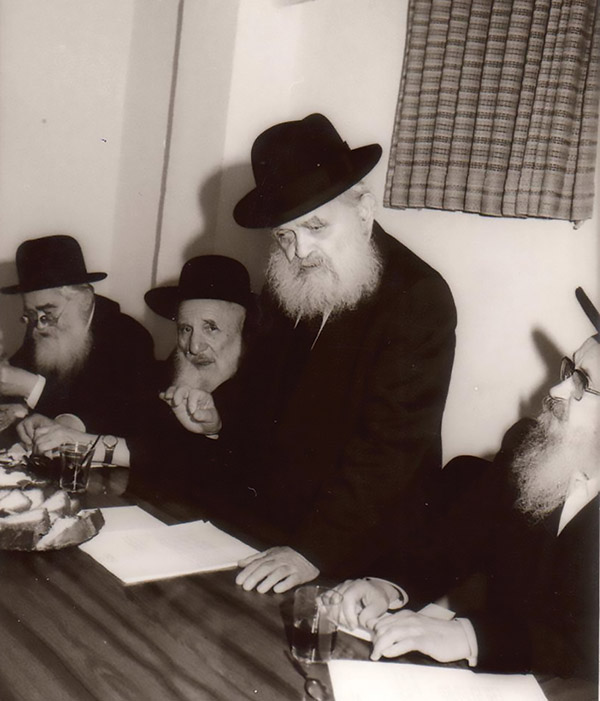
For instance, Rabbi Jehiel Jacob Weinberg is quoted as remembering a winter trip he took with the Alter of Slabodka to the town of Kelem where the Alter had once studied under Rabbi Simcha-Zissel Ziv. Ziv was a leading figure in the second generation of the Musar movement, in which his student, the Alter, as the rosh yeshiva of Slabodka, was now also a leading figure. Both of their yeshivas prioritized the cultivation of students’ moral sensibilities through introspection and disciplined study of certain medieval and early modern rabbinic works, but they had fallen into a disagreement over pedagogical methods.
One bitter winter night I visited Kelem together with the Alter, and the Talmud Torah called a special meeting about us. After deciding that the Alter was a rodeph [murderous pursuer] because he miseducated in Slabodka, they saw to it that no one allowed him to sleep over.
Kamenetsky goes on to speculate that “there must have been some sub rosa element involved,” some underlying personal issue or unmentioned dispute that went beyond matters of pedagogy, but, of course, it is precisely the sub rosa that the haredi world wishes as much as possible to deny, at least with regard to relations between its gedolim.
In another, more humorous, depiction of discord between now-hallowed figures, Rabbi Chaim Ozer Grodzinski asked Reb Hayyim Soloveichik how he should handle the Talmudic arguments of the famously irascible genius Rabbi Joseph Rozin, known as the Rogochover Gaon, when Reb Hayyim left the room.
R’ Soloveichik told him to first say, “There is no such gemara,” and then by the time the Rogachover laid out his understanding of the source and the “proof” therefrom, R’ Chaim-Ozer, too, would have ample time to figure out its irrelevance. . . The Rogochover became so peeved with R’ Chaim-Ozer that he “threw chairs at him.”
Saints, like ordinary people, ought not act like this. More to the point, they ought not be described as acting like this, even if, in fact, they did.
In a fascinating extended aside (though that may describe most of the passages in the book), Kamenetsky investigates the story of an early-twentieth-century exorcism of a young girl seemingly possessed by a dybbuk (spirit) in the presence of the great Rabbi Israel Meir Kagan, known as the Chofetz Chaim. Rabbi Elchonon Wasserman, who was a participant in the event, wrote an account of it which he deposited in the archive of the Kelem yeshiva, and used to retell the story on Purim. However, Rabbi Joseph Solomon Kahanneman denied that the Chofetz Chaim believed that a genuine dybbuk had inhabited the girl and thought Rabbi Wasserman merely naive. Again, airing such stories of disagreement and even disrespect among gedolim is simply not what the haredi reader expects to find in a biography written by one of their own.
The reader of Making of a Godol is also rewarded with real insight into the lives and personalities of many of the rabbinic leaders of Lithuania, foremost among them Yaakov Kamenetsky’s teacher the Alter of Slabodka, Rabbi Nosson Tzvi Finkel, who featured in several of the above anecdotes. Kamenetsky also focused on the very close, sometimes tense, relationships Finkel had with his favorite students, including his father. One whose only exposure to teachers and students is in the typical American high school or university cannot begin to appreciate the connection of a student of Torah to his rebbe, particularly in a yeshiva like Slabodka, which prized the study of Musar and the development of its students’ characters. All the more so when dealing with a charismatic figure like Finkel, who was so devoted to his students that he didn’t even privilege the education of his own children over theirs, “because they were all like his children.”
The Alter’s students reciprocated this devotion to the point of emulating
his gestures. Thus, leading students from Slabodka tended to look at their
fingers when they spoke in public, like their master. Finkel’s habit was due to
his extraordinary stage fright,
Kamenetsky tells us in another one of his extraordinarily deep dives into the
details of his subjects’ lives, but that did not matter to his followers. If he
looked at his fingers then they would do so as well.
The incredibly harsh rabbinic response to Making of a Godol was surprising to Kamenetsky as well as the haredi public. Although this was hardly the first time that leaders of the community had declared a book off limits, it was unheard of for the haredi leadership to actually ban the book of one of their own. On the other hand, it was also unheard of for a rosh yeshiva to devote himself with such diligence to a project that took him away from Torah study. Kamenetsky was aware of this. In the foreword, he confesses that “I was constantly concerned that I was living in a state of the sin of bittul Torah by squandering time from Torah study for long periods. . . . I cannot say with confidence that I made the right decision.” And yet, he reflects, when he studied the lives of the gedolim, “I felt myself in their proximity, engaged in the literal service of the sages, the epitome of Torah study.”
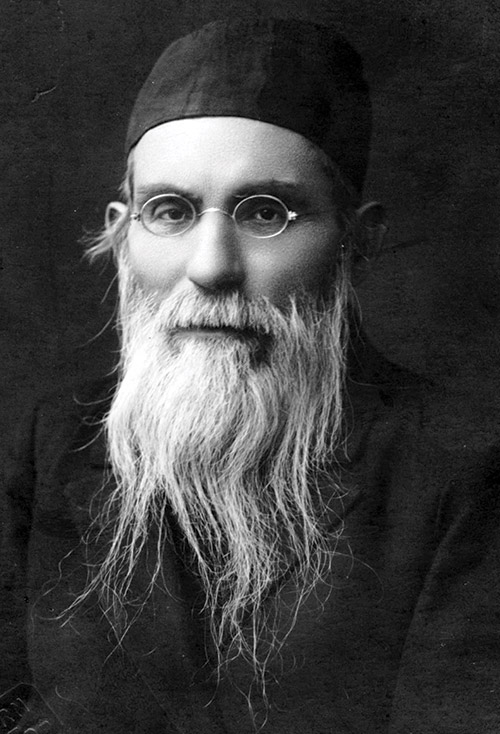
It is hard to know how many people in the haredi world took the ban seriously. Kamenetsky, whom many viewed as having been persecuted in the name of religious correctness, became a mini-celebrity in what might be called the enlightened haredi world. Nonetheless, after failing to convince Rabbi Elyashiv—who was in his nineties and could not read English—of his error in authorizing the ban, Kamenetsky attempted to put an end to the crisis by publishing a slightly revised version of the book, toning down a few passages. But the second “improved edition” was banned too. Both editions sold out quickly, and Kamenetsky never reprinted them, leading to their present status as an expensive collector’s item for a very niche audience.
Kamenetsky defended his position both publicly and privately, but he was never provided a forum for rebuttal within the haredi world. Eventually he wrote another book, Anatomy of a Ban, which is a kind of source book presenting the history of the ban as well as all the relevant original documentation. He wrote:
As a quasi-historian, I want posterity to know the story of how a ban on a good book—and those who read the book know it is good—came about. Secondly, like every author, I wish to bring enjoyment to the reading public. Thirdly, by way of this book I hope to clear my name (in the eyes of the fair readers, whose opinion counts with me) of the accusation, implicit in the ban, that I am an evil man, may the Almighty spare us.
Although Anatomy of a Ban was never publicly disseminated, Kamenetsky gave it freely to anyone who visited his house in Jerusalem (which is how I got my copy), and a PDF still floats around the Internet. In this book, he puts most of the blame on zealots who misled the gedolim about what was in his book, yet you cannot put down Anatomy of a Ban without concluding that he viewed Rabbi Elyashiv and his fellow gedolim as sharing the blame.
For all the heartache the ban caused him, at the end of Anatomy of a Ban, Kamenetsky describes himself as the “proud author of Making of a Godol.” He was also angry:
And there is another matter for which they will never be forgiven. . . . I cannot undertake the continuation of my work on the next volume, which is already swirling in my mind, howling in my innards: the events in Lithuania and in the yeshiva world during the five years before World War I; the war’s progress on the Eastern front; the 5675 (1915) exile of Lithuanian Jewry deep into Russia; the fate of Slabodka, Radin, Mir and Lomzha during the war; the Russian Revolution and its effects on the yeshiva world; the pogroms in the Ukraine and their effect on the yeshivoth, the return of the yeshivoth to their prewar sites and the radical changes in Jewish society; the meeting and bilateral influence of western and eastern European Jewry which resulted from the German occupation of eastern Europe. . . . and an ode to my native, typical Lithuanian shtetl, the martyred Tzitevian. All this will remain unpublished, I am afraid. And the world can blame my detractors for it.
Kamenetsky aimed to provide a true portrayal of events and personalities in the Lithuanian Torah world, and he deeply regretted being prevented from continuing his great project by the pressures brought to bear on him. For his critics, this desire to get at the historical truth of his community’s history was his great sin, because from their perspective only hagiography was appropriate, and any hint of dissent from the cultural groupthink was anathema.
One of the passages that his haredi critics found objectionable was actually about Kamenetsky’s own father, who remembered reading Russian translations of Shakespeare as well as the works of Jules Verne and Arthur Conan Doyle as a child. When a parent asked Reb Yaakov what his children should be reading for pleasure, he replied, “What is wrong with Agatha Christie?” Kamenetsky’s critics didn’t really deny that the great Reb Yaakov might have once said that, but they didn’t want to hear it now.
In his response to his adversaries, Kamenetsky sought to turn the tables, arguing that it was really they who were guilty of being disrespectful of the great rabbis. After all, he argued, take Rabbi X, who was an indisputably great rabbi but also had a temper, or read Pushkin or Conan Doyle, or supported Zionism. For the current haredi leadership, these traits couldn’t be discussed because they are not currently regarded as acceptable features for those in the godol pantheon. Yet Rabbi X really did have a temper and might well have read secular literature or been a Zionist. Consequently, they must really be arguing that Rabbi X isn’t a godol.
Yet here I think Kamenetsky got it wrong. In these matters, the haredi leaders are not disrespecters of great rabbis or hypocrites; they are esotericists. Take the issue of a rosh yeshiva who was a Zionist in his youth. This might be indisputably true but there are reasons that the haredi masses shouldn’t know it. First of all, it would show that a godol had made a terrible mistake. Conversely, it might tempt someone to reconsider Zionism as a legitimate political position. Kamenetsky, whatever his methodological flaws, was genuinely curious about the history of his community; haredi hagiographers are interested only in a “usable past.”
Kamenetsky repeatedly denied any desire to subvert current haredi society, and many of his defenders argued that his book was banned because of his political naivete. But having now re-read Making of a Godol, I can’t shake the feeling that he did want to shake up haredi society by exposing his readers to their own unvarnished history. I don’t think that he expected his book to be banned. Yet I am certain that he knew the book would ruffle feathers—and that he fully wished to ruffle these feathers. He was part of haredi society and remained one until his death in 2019, but he also wanted his community to be more sophisticated in its historical understanding, to understand, among other things, that the great figures of the past were, like his father, complex human beings.
In a sense, Kamenetsky was the greatest backer of the haredi world. Others faced with what he suffered, including being told that his life’s work was a desecration of all that his community held dear, would have abandoned it. Yet he chose not to leave. I think that in the end he realized that long after the ban had been forgotten, readers and researchers would still turn to Making of a Godol to understand something of the uniqueness of the outstanding Lithuanian Torah scholars known as gedolim.
Comments
You must log in to comment Log In
Suggested Reading
The Rogochover Speaks His Mind
After he visited the odd talmudic genius, Bialik said that “two Einsteins can be carved out of one Rogochover.”
Pious Censorship
ArtScroll is not alone on Marc B. Shapiro’s hit list of haredi publishers and publications guilty of censorship and deliberate distortions.
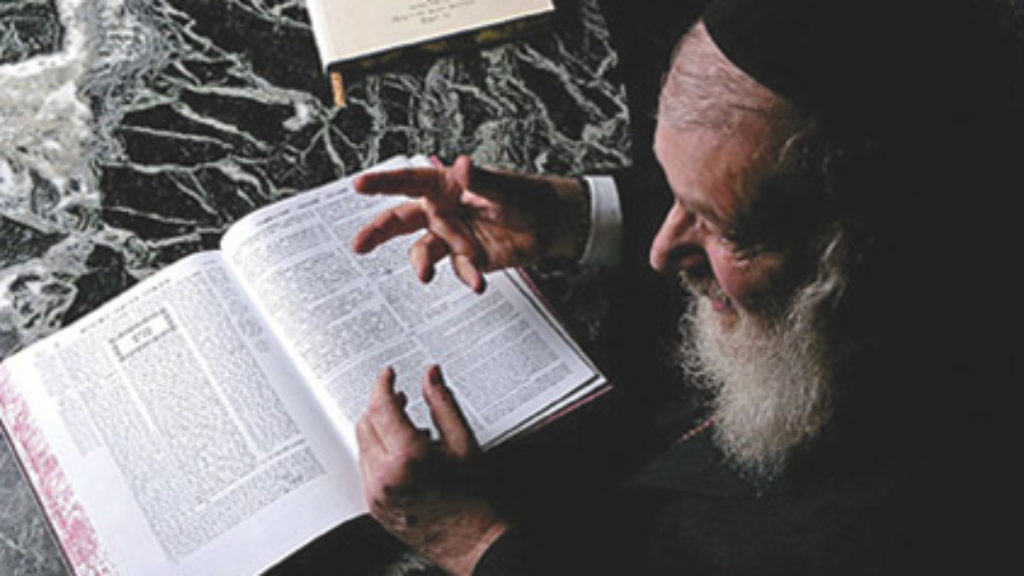
ArtScroll’s Empire
How did a Brooklyn-based, Orthodox publishing house corner the market on religious texts in America?
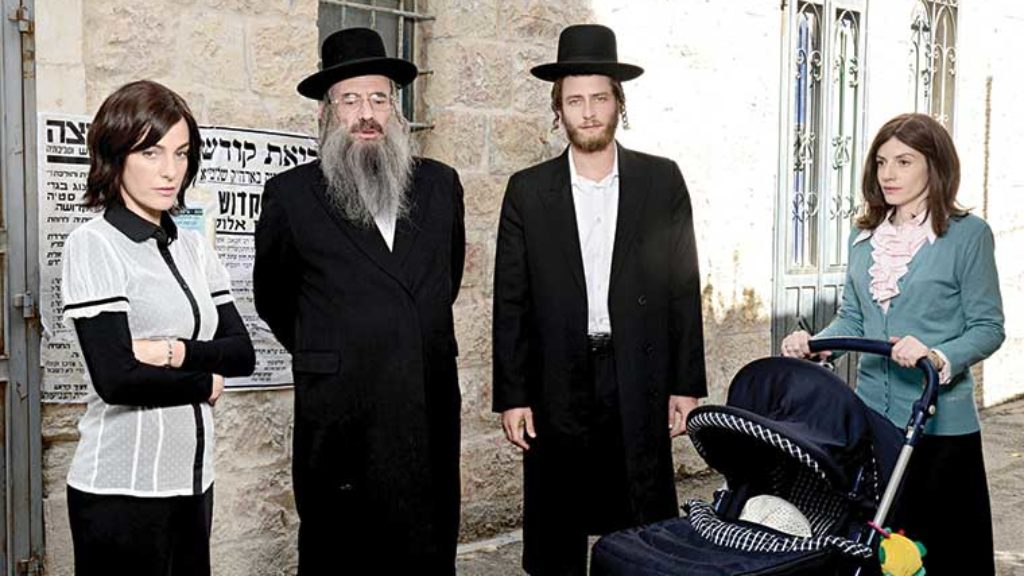
Nuclear Family
Part of the artistry of Shtisel derives from an almost ritualistic obsession with the details that ultra-Orthodox Jews themselves obsess over.
Thomas Timberg
But several academic type libraries have copies see www.worldcat.org. Available to read, and partially scan for free.
maieutic
Fascinating--much reminds me of Barukh halevi Epstein Meqor Barukh--he also walks a razor's edge, but the book was accepted in the Kharedi world as well as enjoying a secular readership (Bialik praised it!).
Thanks!